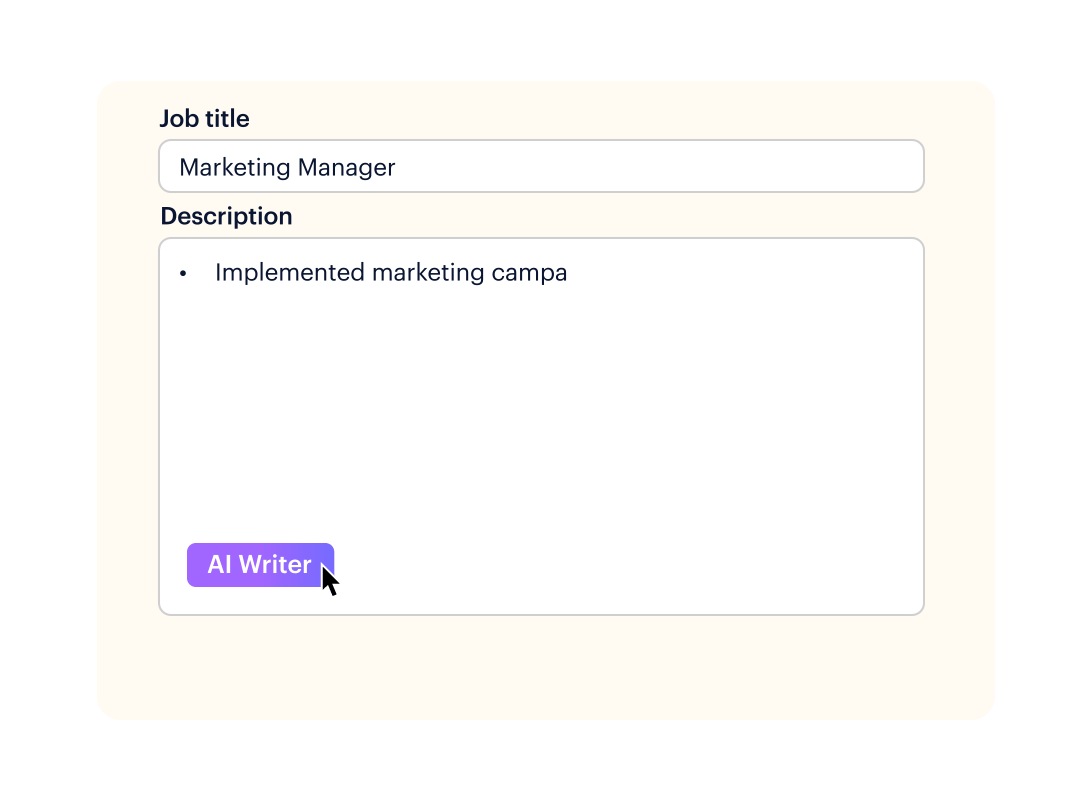A complete, clear, and comprehensive overview of the human resources statistics for the year 2023. Here, you will find all the information in one place, summarized just for you. Keep on reading if you want to see the trends and figures for hiring, recruiting, job searching, and more.
Are you looking for a new job, and you want to know your chances? Are you wondering if your current company follows the HR trends? Or are you a recruiter interested in knowing the summarized state of the market?
If you answered yes to any of these, just scroll down. All the crucial information follows in a simple, structured way.
In this article, you will find:
- statistics about job interviews and resumes;
- overview of the key data about job search, unemployment, and diversification of the job market;
- data about recent graduates entering the work field;
- highlights of the most important trends which shape the HR field today.
General HR statistics overview for 2023
- The average length of working hours per week in a private company is 34.4 (statista.com).
- The average number of yearly vacation days has dropped from over 20 in 2000 to 11 in 2023 (forbes.com).
- Only 76% of all US employees can take paid vacation days (financesonline.com).
- 45% of employees in America have side jobs to earn extra money (Zippia.com).
- The median length of stay with a current employer is just above 4 years (financesonline.com).
- 65% of workers are happy with their jobs (Zippia.com).
- 75% of workers will consist of GenZ and Millenials by 2025 (legaljobs.io).
- An average American changes their job around 12 times per life (Bureau of Labor Statistics).
- 67% of asked people claimed that one of the most important factors, which makes their job enjoyable, is having a friend as a colleague (pewresearch.org).
- Only 15% of workers feel a sense of engagement toward their workplace in 2023. This number has significantly dropped after the 2020 pandemic (gallup.com).
- 60% of American workers claim that they're able to sustain a healthy work-life balance (Zippia.com).
- In 2023, only 59% of people who got a job would accept the offer again, compared to 83% in 2021 (gartner.com).
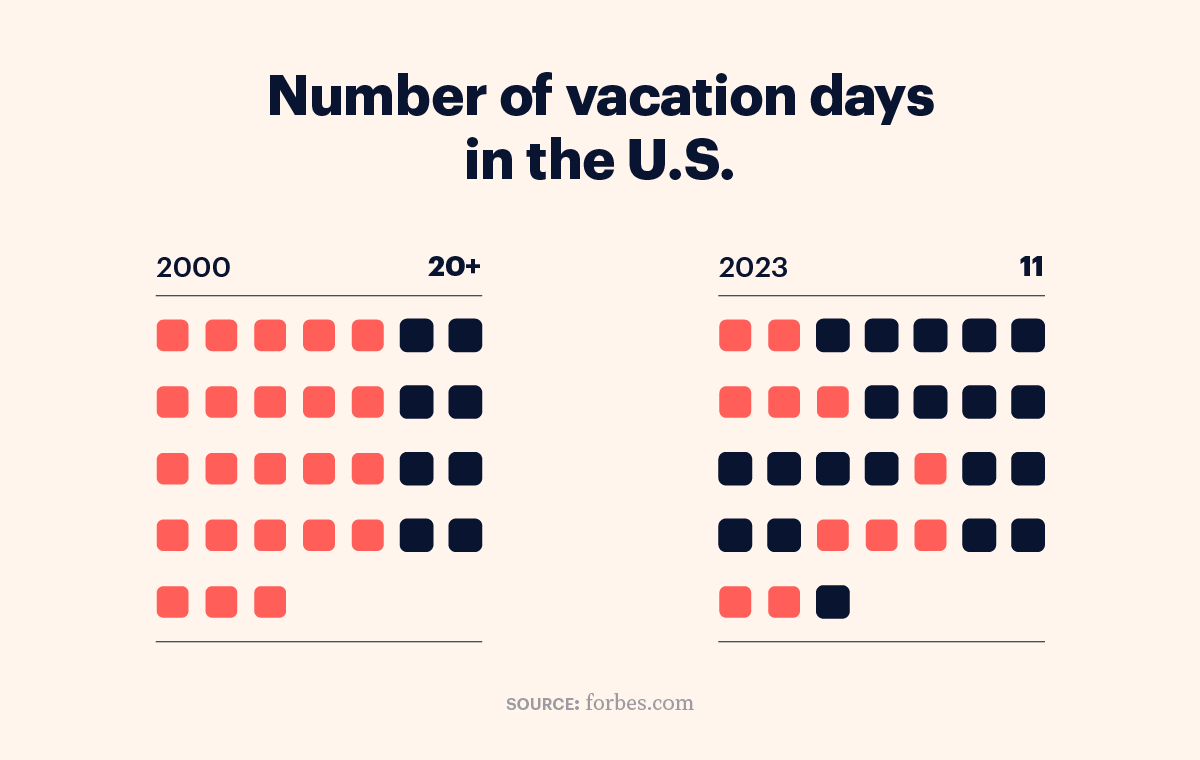
Job search statistics overview for 2023
- There are 118 applicants per job offer on average. Out of these, only up to 22% of applicants get chosen for the first round of interviews. One leaves with a job (legaljobs.io).
- If you decide to apply for a job in a corporate, the number of applicants per position is even higher — around 250 (Zippia.com).
- 91% of employers look for employees with experience (National Association of Colleges and Employers).
- On average, one spends 24 weeks before successfully finding a job (US Bureau of Labor Statistics).
- At the end of March 2023, there were 9.5 million advertised job openings in America (Statista.com).
- The key information for job seekers during the search is the height of salary (67%), followed by the offered benefits (63%) (Netsuite.com).
- 60% of people found their current jobs via their network, not online (Indeed.com).
- In most cases (67%), what motivates people to accept a job offer is the salary. This is followed by offered benefits (63%) and by a convenient job location (59%) (Netsuite.com).
- Approximately 70% of the workforce worldwide consists of passive talent, while the remaining 30% comprises active job seekers (LinkedIn).
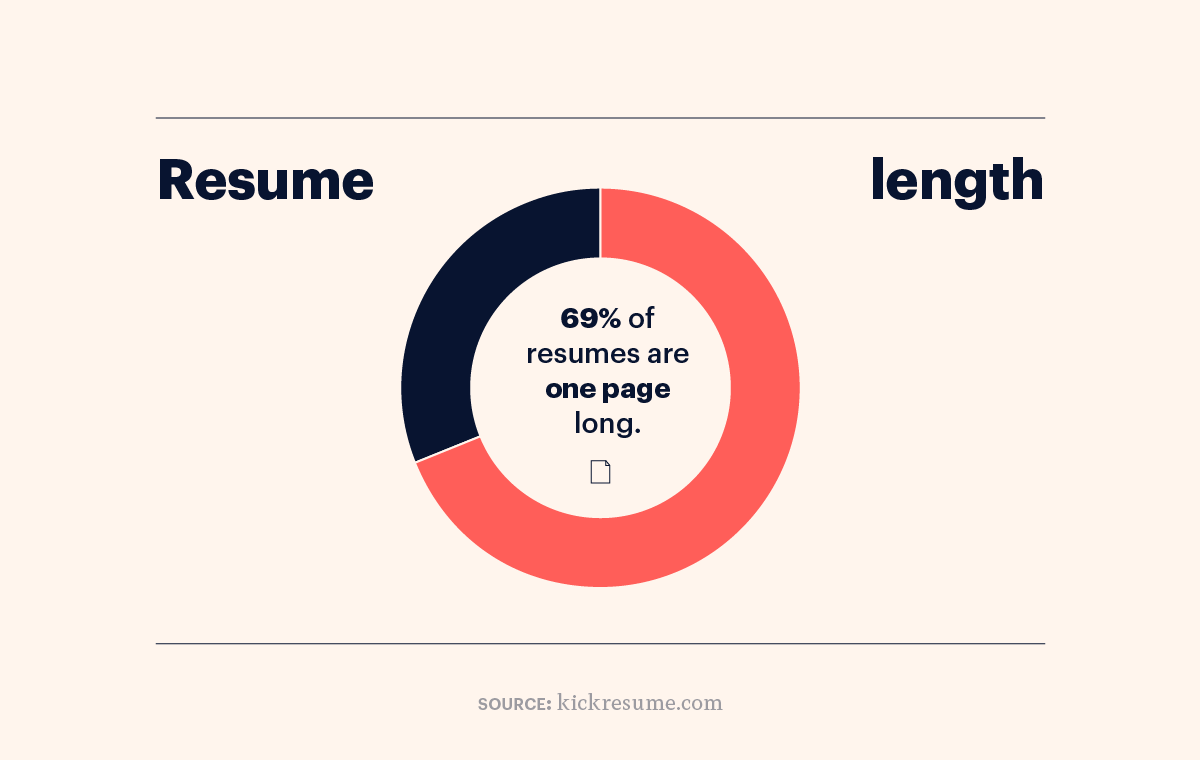
Resume statistics overview for 2023
- On average, the CV that you have worked so hard on is being screened by a hiring manager for only 6–8 seconds (cardinalstaffing.com).
That is why it is so important to have a resume that is structured, places the important information right at the beginning, and is also visually stimulating. Have a look at our creative CV templates that will help you catch your future employer´s eye.
- 69% of resumes consist of between 200 to 400 words (Kickresume).
- The most common additional resume section is “Languages”. 30% of people include it on their resumes (Zety.com).
- Only 37% of resumes include a “Resume objective”(Kickresume).
- Overall, one must send out between 30 and 50 resumes before being successful at getting hired (Zety.com).
- A grammar mistake is seen as a deal-breaker by 77% of recruiters (legaljobs.io).
- 44% of resumes included “filler words”(Kickresume).
While most people try to filter the information on their CVs, so it does not exceed one page, this is no longer required.
- In 2023, 77% of companies would not pick an applicant with a resume that is only a page long (Zety.com).
- Furthermore, there is a 2.9x big chance of being selected if the resume is two pages long (Zety.com).
- 45% of job applicants don't accompany their resumes with a cover letter (Kickresume).
Interview statistics overview for 2023
- On average, candidates are called for an interview 2.5 weeks after the application deadline (standout-cv.com).
- The most common length of time, which passes between a successful interview and an official job offer, is 5-6 weeks. This is the case in 34% out of all instances, followed by 3-4 weeks of waiting time in 31% of all cases (Indeed.com).
- If 9 weeks have passed without receiving an answer, the chances of getting a job drop to only a 3% success rate (Indeed.com).
- On average, companies call 6 candidates for an interview (standout-cv.com).
- In other words, on average, only 2% of all job applicants are selected for an interview (standout-cv.com).
- In 2022, only 37% of employers expected male candidates to wear a tie for an interview (standout-cv.com).
- While an average phone interview tends to last between 15 and 40 minutes, a standard in-person one ranges from 45 to 90 minutes (Indeed.com).
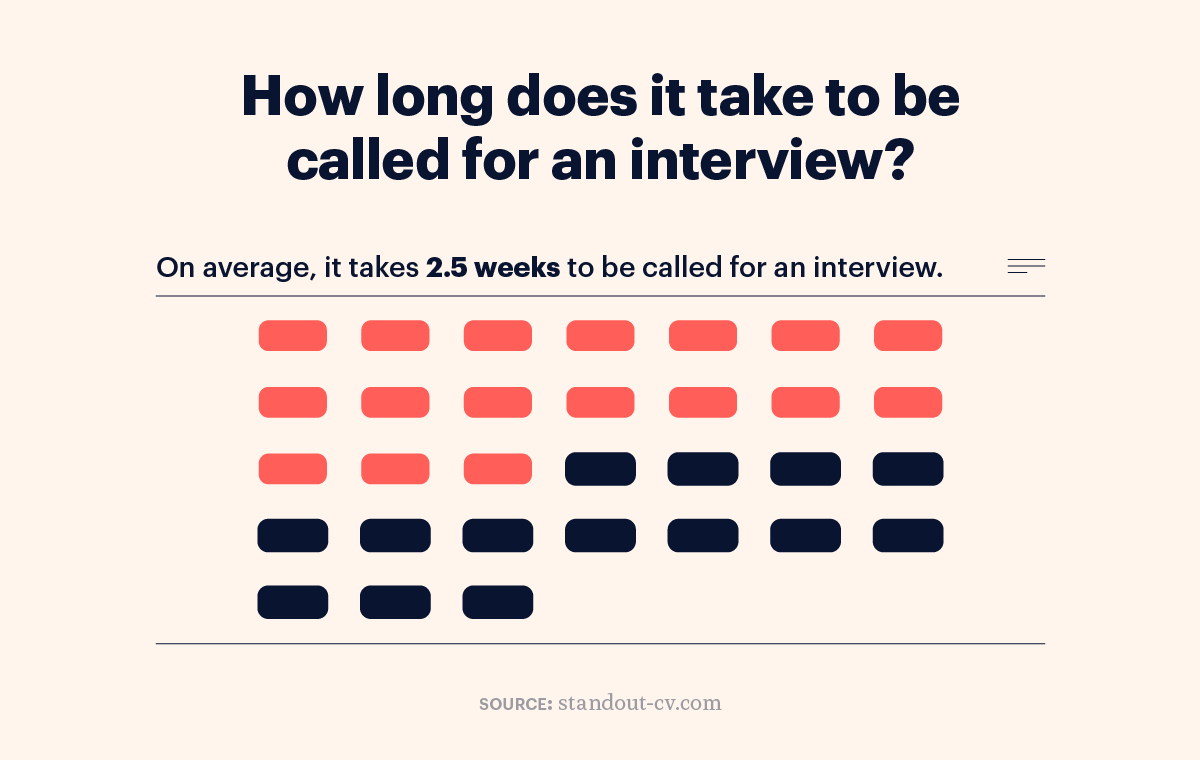
Unemployment & job loss statistics for 2023
- At the moment, in the United States, 3.4% of the population is without a job. This translates to almost 5.7 million unemployed people (US Bureau of Labor Statistics, April 2023).
- In comparison to 2021, unemployment decreased by half, as in April 2021, unemployment was over 6% (Bureau of Labour Statistics, 2021).
- In 2022, 7.6% of people with disabilities weren't employed (builtin.com).
- The group with the highest unemployment rates in the U.S. is the Black/African-American population (statista.com).
- During the course of 2021, over 47 million people quit their jobs, which equals 23% of the U.S. workforce. In 2022, 38 million more people quit (computerworld.com).
- Every year, 35% of workers leave their job because they found a new position elsewhere (netsuite.com).
- Around 30% of new employees leave their job within the first 6 months (BambooHR).
- The number 1 reason for quitting is low pay (Society for Human Resource Management).
- 80% of workers stated that a reason behind high levels of stress in the workplace was bad communication (financesonline.com).
Fresh graduates employment statistics for 2023
We all know that being a recent graduate looking for the first real full-time job is no fun. In 2023, the year marked by recession, inflation, and big-tech layoffs, this was even more true.
-
- The average time for finding a job after graduation is half a year (University of Washington).
- According to recruiters, entry-level jobs are the hardest ones to fill (LinkedIn).
- 94% of fresh graduates believe that they will work in a field that is related to their respective degrees. However, only about 57% of them succeed in doing so (Zety.com).
- This percentage goes down even lower — by 27% — when we look at graduates who managed to find a job directly in their study field (Zety.com).
- 15% of Harvard graduates are unemployed 10 months after graduating (Gitnux).
- Graduate unemployment was the highest in 2020 — standing at 13.3% (Gitnux).
- Recent male graduates (81.1%) have lower unemployment rates compared to female graduates (78.2%) (Gitnux).
- More than half of graduates believe that they are underemployed (Gen Z Report Accenture).
- 78.6% of fresh graduates enter the job market with a completed internship/apprenticeship or another form of related job training experience (theforage.com).
This clearly shows that in 2023 internship is no longer an advantage but an absolute necessity. Having experience when looking for a job is simply crucial.
Diversity in HR overview for 2023
Gender:
- In 2023, women create less than half of the workforce in America — 47%. This number goes down to 30% if the job requires manual labor (Pew Research).
- Women apply for 20% fewer jobs compared to men (zippia.com).
- In 2023, only 10.6% of Fortune 500 CEOs are women (builtin.com).
- On the other hand, women have a 16% higher chance of landing a job after applying than men (zippia.com).
- In 2022, the median wages earned by women equaled 83% of men's wages (builtin.com).
- Compared to cisgender people, transgender people are twice as likely to experience unemployment (thetaskforce.org).
- Furthermore, 44% of transgender employees are underemployed (thetaskforce.org).
- Companies, which have higher rates of gender diversity, tend to be more than 20% more successful in comparison to those companies, which have lower rates of diversity (netsuite.com).
Ethnicity:
- 77% of the U.S. workforce is white (builtin.com).
- Companies that employ more ethnically diverse employees are doing better than the less diverse companies — by 36% (netsuite.com).
- The group, which has the lowest employment rates out of all gender and ethnicity categories, is black men (brookings.edu).
- In America, black people have a 50% higher unemployment rate than white people. (americanprogress.org).
- Latino and black people hold only less than 6% of leadership positions in America (netsuite.com).
- Job applicants who are white get 36% more callbacks than applicants of color (zippia.com).
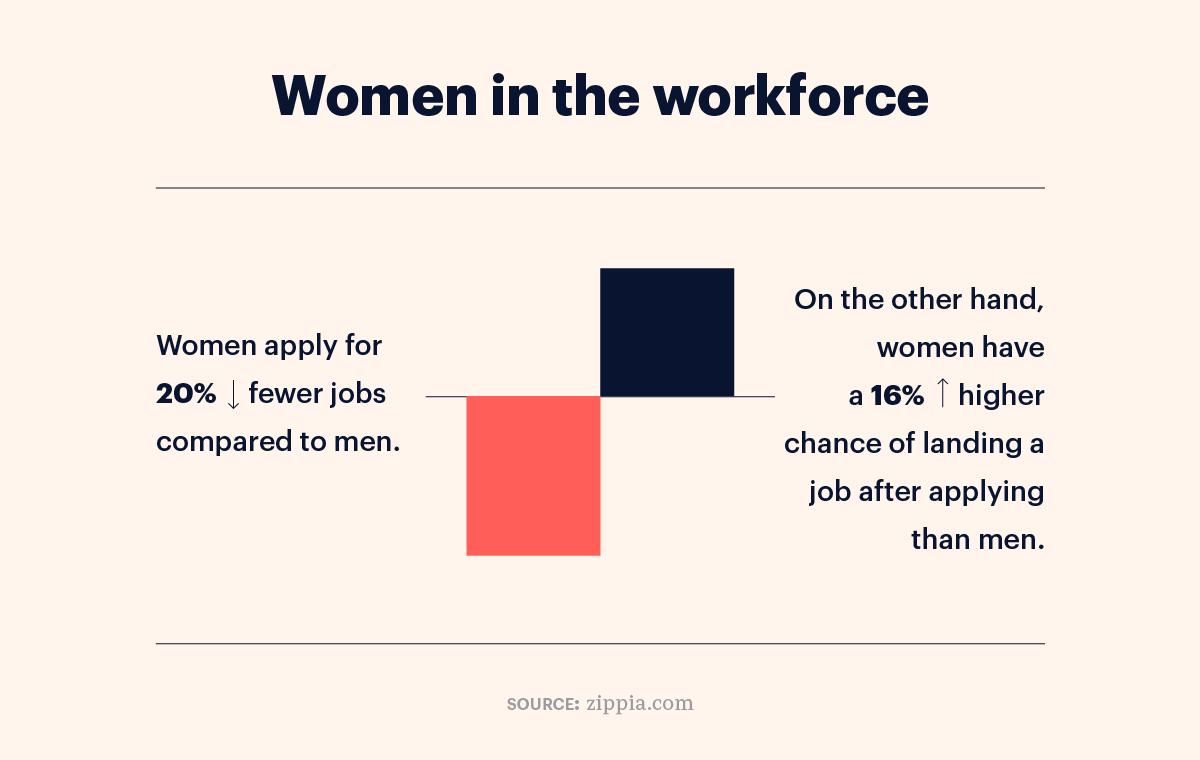
Overview of the online activities related to HR for 2023
- In 2022, 80% of job search was done online (Zippia.com).
- 79% of all research respondents use social media (such as LinkedIn or Instagram) when they are looking for a job. This percentage is even higher — 86% — for young people (The Open University).
- LinkedIn is a favorite HR tool on the other side of the employment chain, too. 90% of company recruiters use LinkedIn when they are selecting and background-checking new potential employees (Zippia.com).
- According to a survey, 41% of employers indicate that they may not interview a candidate if they are unable to find them online (LinkedIn).
- On average, when looking for a job, people scroll through 7.6 job search portals (Glassdoors).
- 60% of asked recruiters admitted to investigating job candidates online and on their social media profiles (Zety.com).
- Almost 66% percent of job recruiters negatively judge evidence of alcohol consumption on a candidate’s social media profile (Zety.com).
Freelance work statistics overview for 2023
- There has been significant growth in freelance work in the U.S. over the past couple of years. While in 2014, there were 53 million registered freelancers, in 2019, it was already 57 million. In 2023, this number grew to 73.3 million freelancers (financesonline.com).
- Moreover, 71% of respondents who are currently employed stated that they want to freelance in 2023 (demandsage.com).
- Roughly 31% of freelancers earn an annual income of $75,000 or more (demandsage.com).
- On average, freelancers who do delivery earn the least — only around $17 per hour (AppJobs).
- Contrastingly, freelancers who work as programmers earn the most out of all freelancers ($60–$70 ) (demandsage.com).
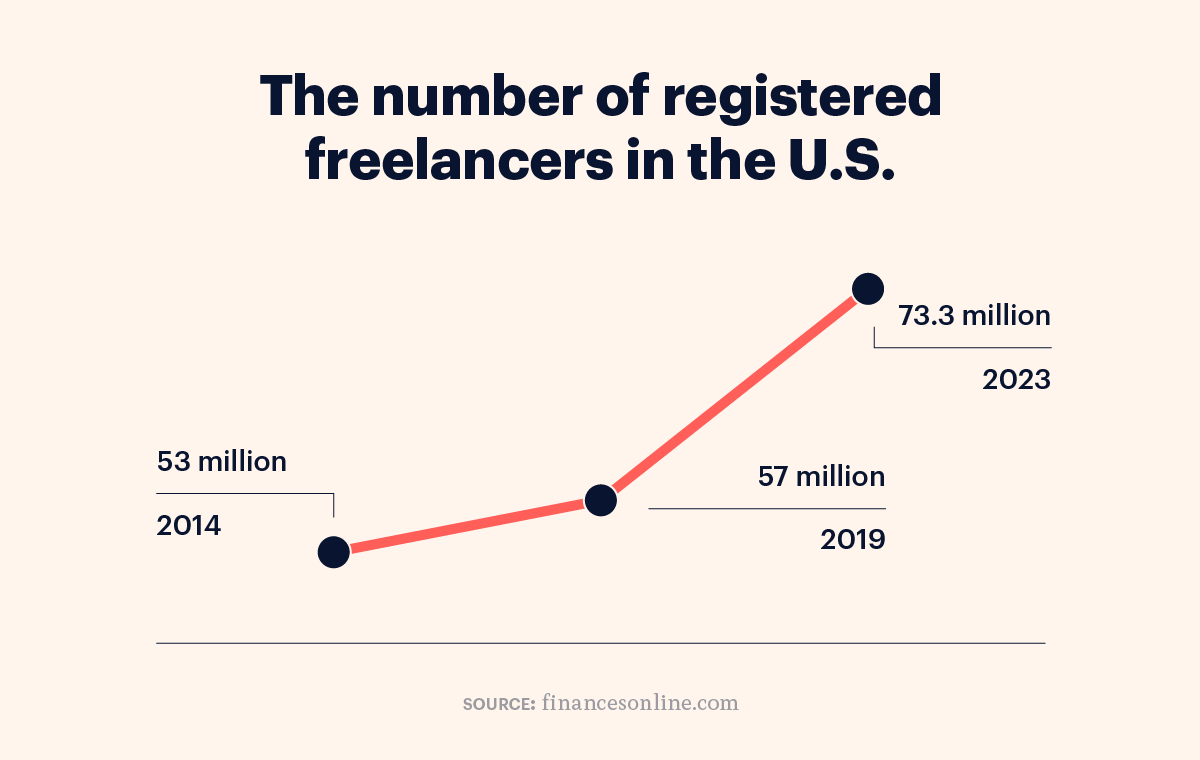
HR trends overview for 2023
Big tech layoffs:
- Layoffs in tech have increased by 649% in 2022 (techtarget.com).
- By the end of May 2023, over 660 tech companies have laid off more than 190,000 employees (computerworld.com).
Remote work:
- Employees who work remotely have a 13% higher chance of giving a high performance as opposed to those who stay in the office (zoetalentsolutions.com).
- However, only 20% of respondents are actually happier with working from home as opposed to working in the office (financesonline.com).
- According to data from summer 2022, 8 in 10 people are working remotely or hybrid (gallup.com)
- 29% percent of people are looking for a new job that allows them to work remotely (zoetalentsolutions.com).
AI:
- 37% of comapnies use AI https (dataprot.net).
- AI is expected to cause a loss of 85 million jobs by 2025 (dataprot.net).
- On the other hand, AI is also expected to create 97 million new positions (dataprot.net).
Well-being:
- With the pandemic, the well-being of employees became the new focus of many companies (Forbes.com).
- An improvement in support that the employer provides for their employees goes hand in hand with the success rates of the company. A 21% increase in high performance was noted in those organizations, which put the well-being of their employees first (Gartner.com).
- Simultaneously, in 2021, there was also a 20% increase in employees reporting their mental health struggles (Gartner.com).
- In the upcoming years, it's believed that remote work will remain popular, and working hours will become more flexible (Gartner.com).
Summary
- As we move into the second half of 2023, we can notice a few key positive tendencies that will influence the HR world in the upcoming months:
- the growing focus on the mental and physical health of employees;
- the growth in diversity of workers;
- remote work and working from home have been established as a norm, and despite the initial reservations, they have proven to lead to results, growth in productivity, and success;
- rise of GenZ in the workforce;
- the rates of unemployment in the United States went down in 2023 in comparison to 2021;
- online job searching platforms and social media are becoming even more popular means of successfully finding a job;
- increase in the number of freelancers;
- On the other hand, the HR field has its weaknesses in 2023:
- people of color in America still have significantly higher rates of unemployment and underemployment;
- together with other minorities and women, it is harder for them to work in leadership positions;
- young people who are entering the job market struggle: it takes several months on average before being able to find a job, and even then, recent graduates are often underemployed;
- people in tech are still facing uncertain times as layoffs continue.
FAQ: HR Statistics 2023
- What are the best jobs in the U.S. in 2023?
The following jobs allow for work-life balance, are well-paid, and are in demand:
Software developers (median salary of $120,730/year), managers in the medical field (median salary of $101,340/year, and information security analysts ($102,600/year) (cnbc.com).
- What are the main HR trends of 2023?
Flexible async work is still on the rise, as well as the emphasis on soft skills over hard skills, and focus on mental well-being and elimination of burnouts (forbes.com).
- What are the key HR metrics to track in companies?
Headcount, acceptance rates, cost per hire, turnover rate, retention rate, employee performance, and employee experience (betterup.com).
